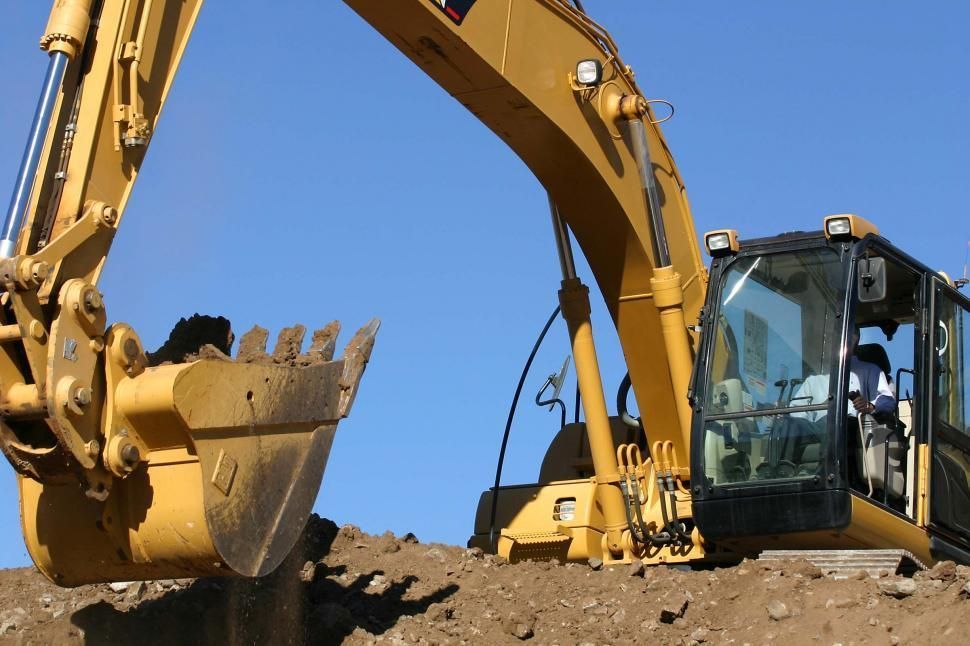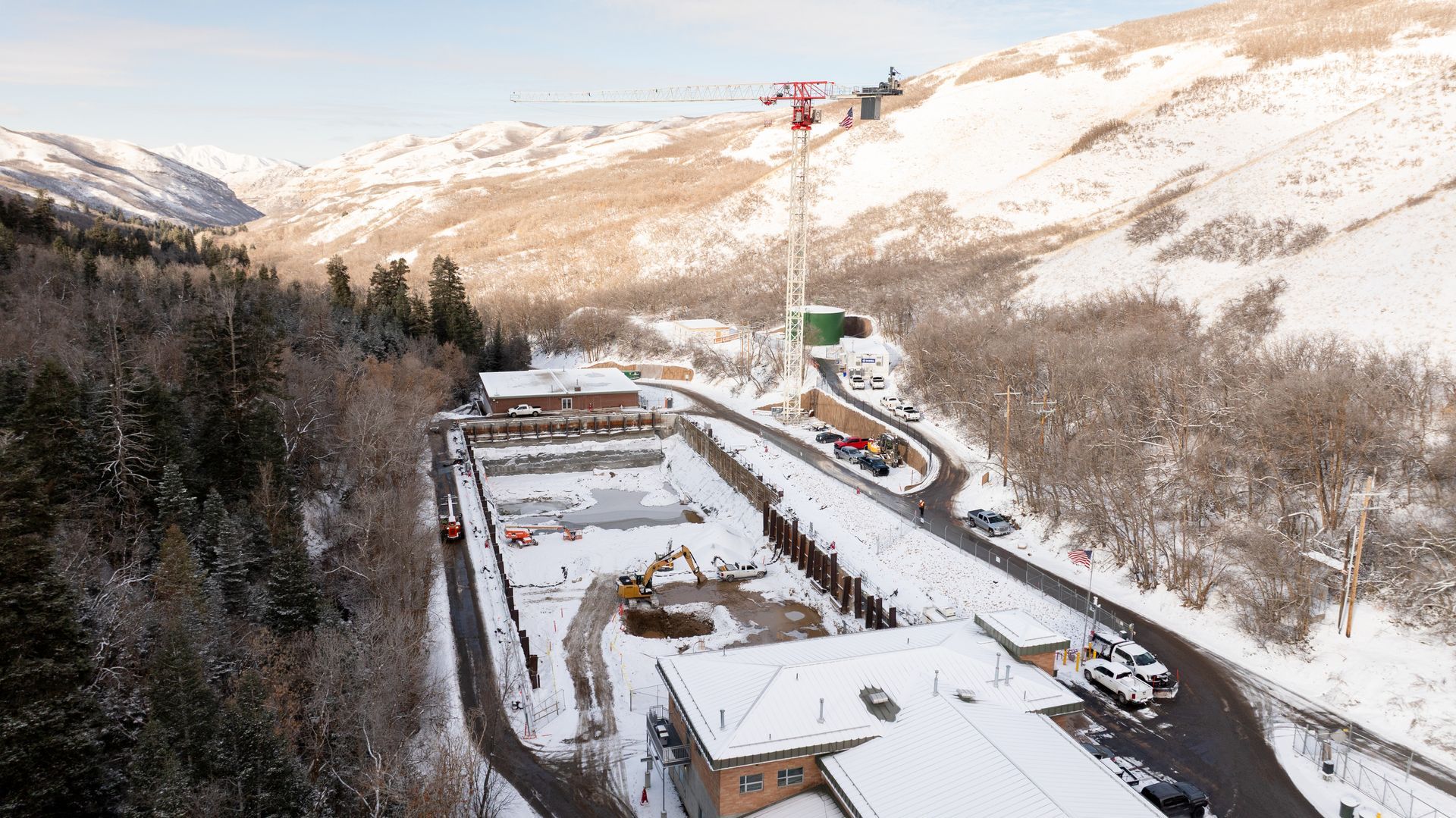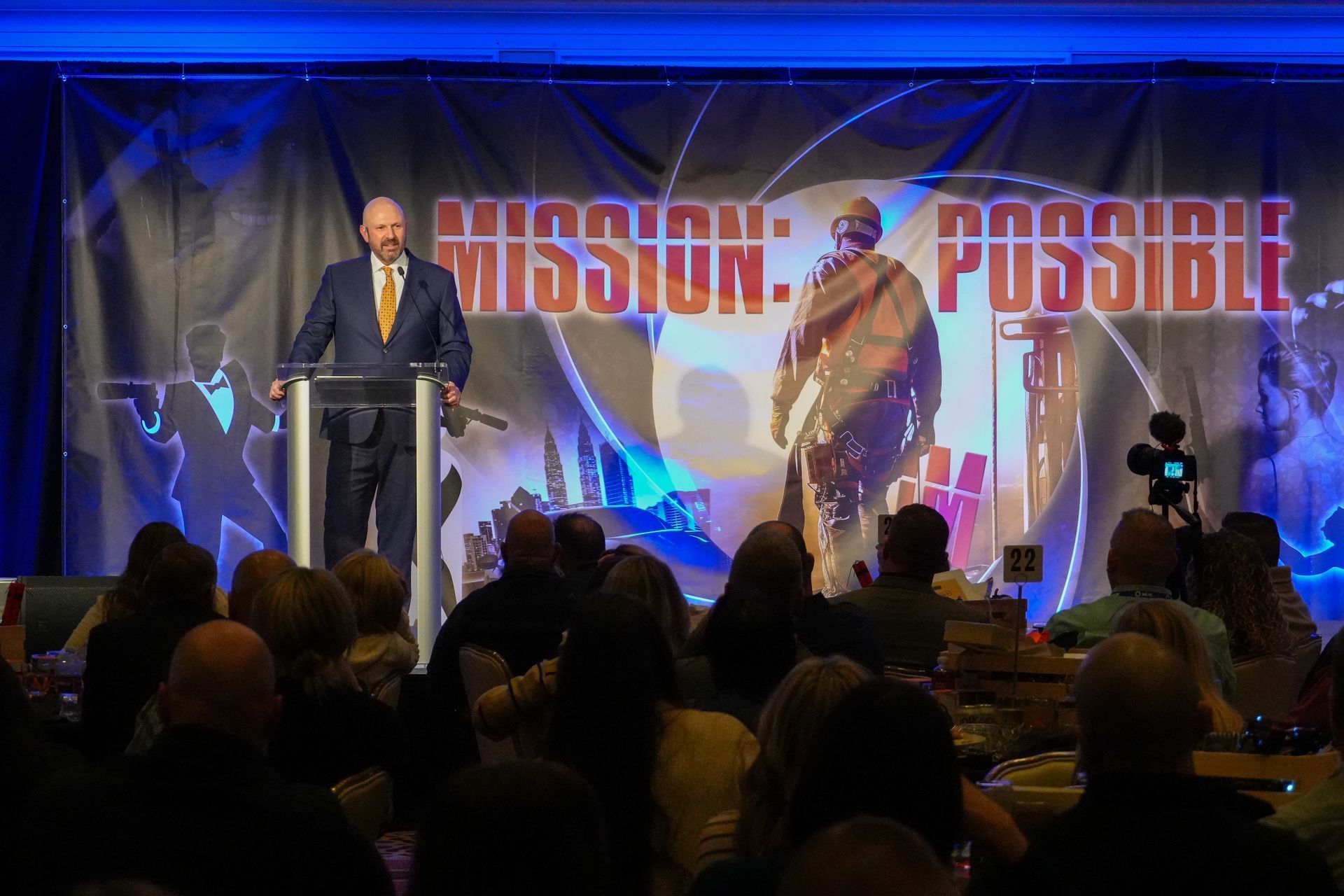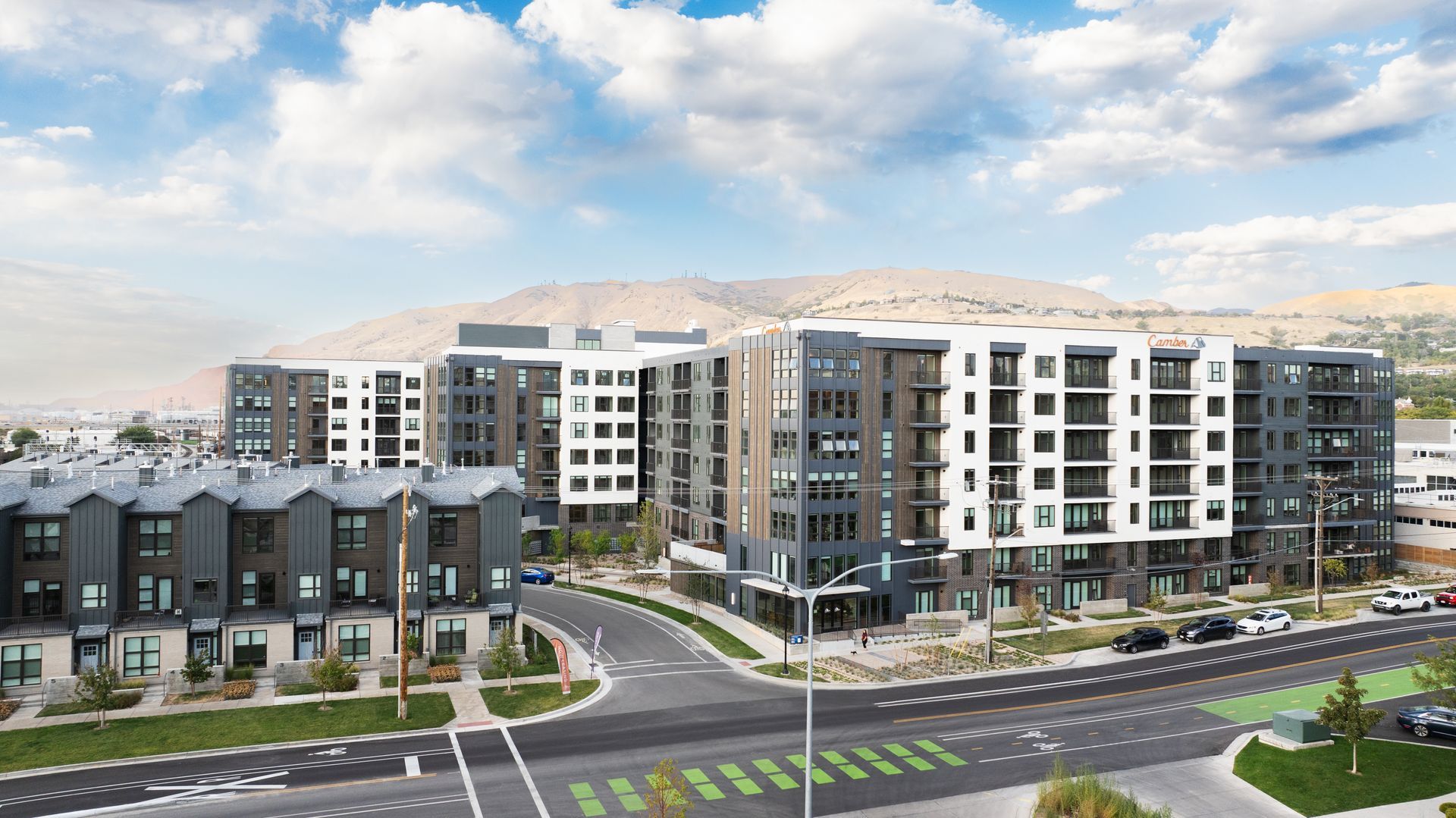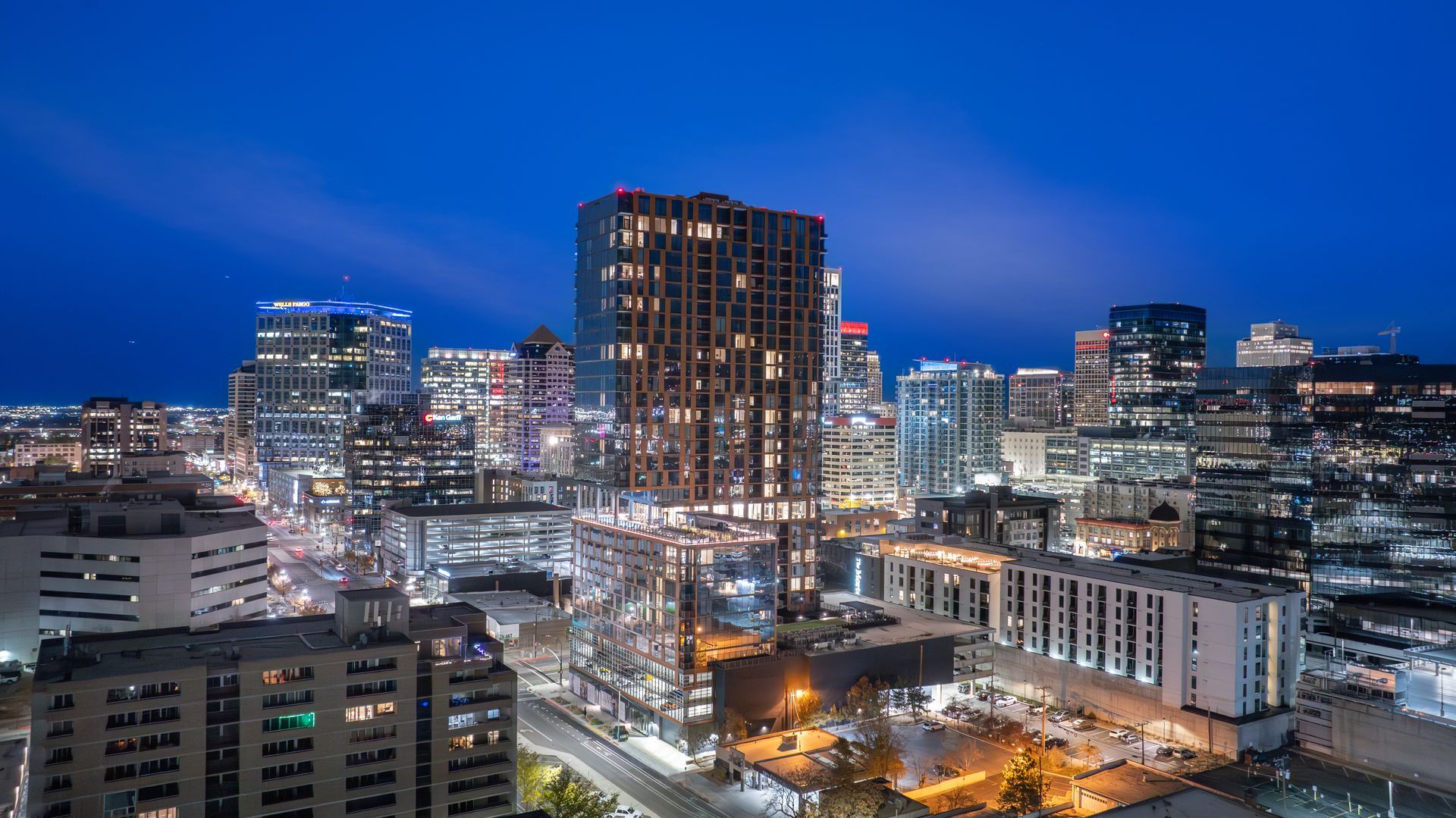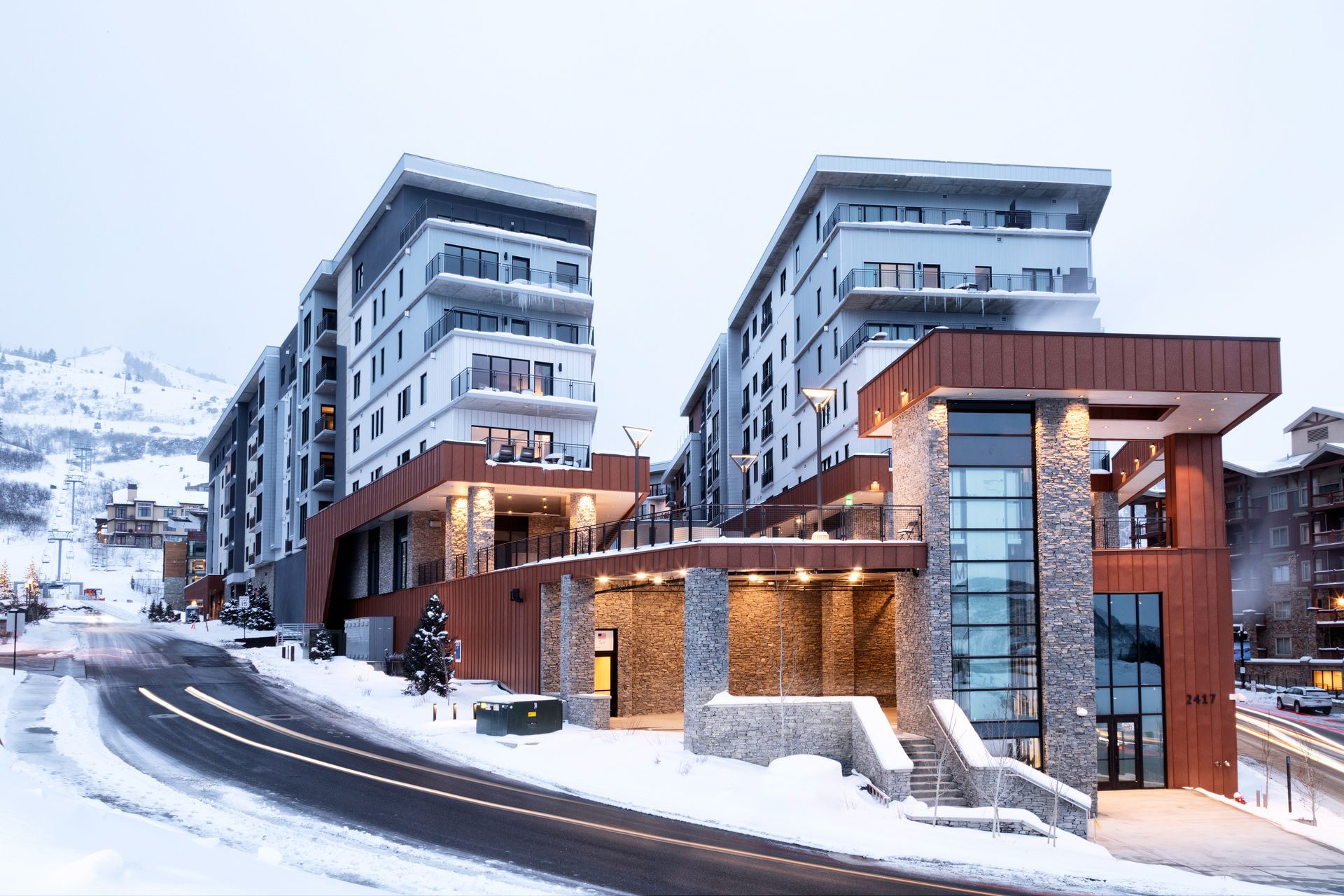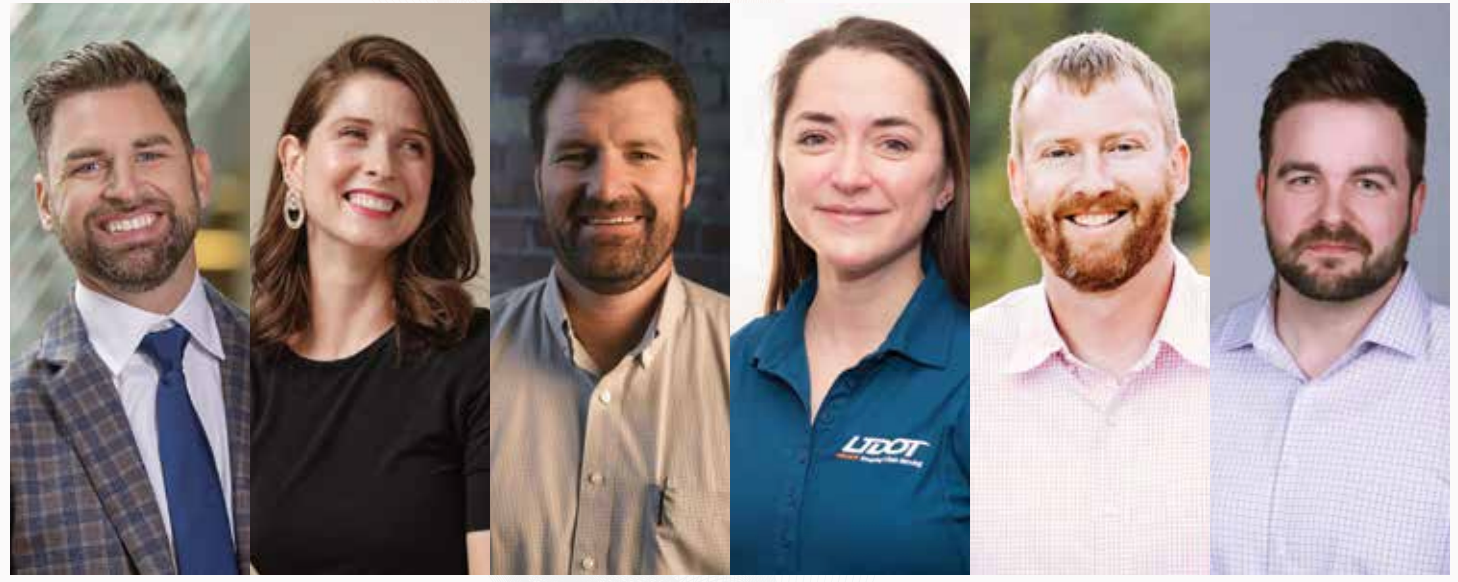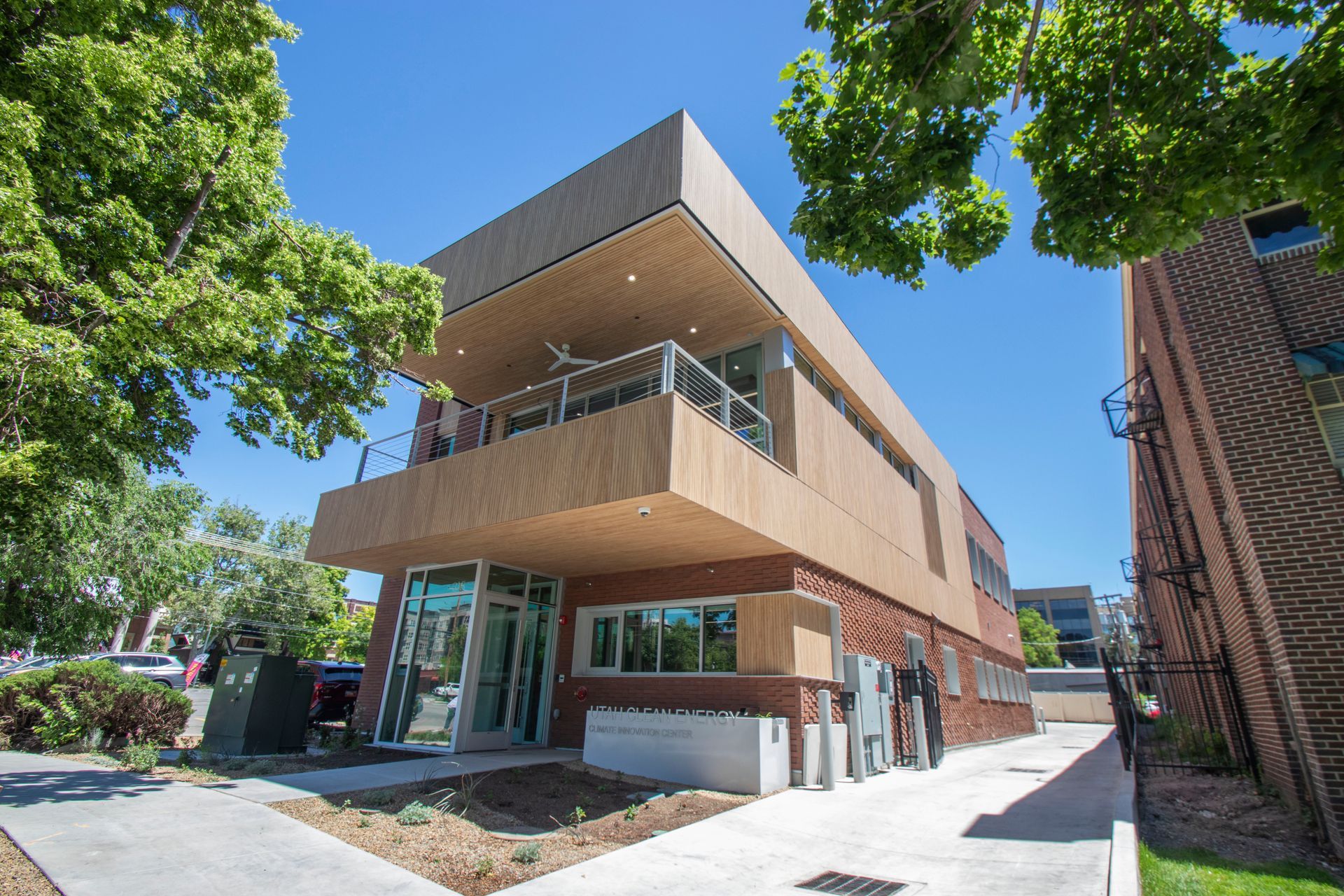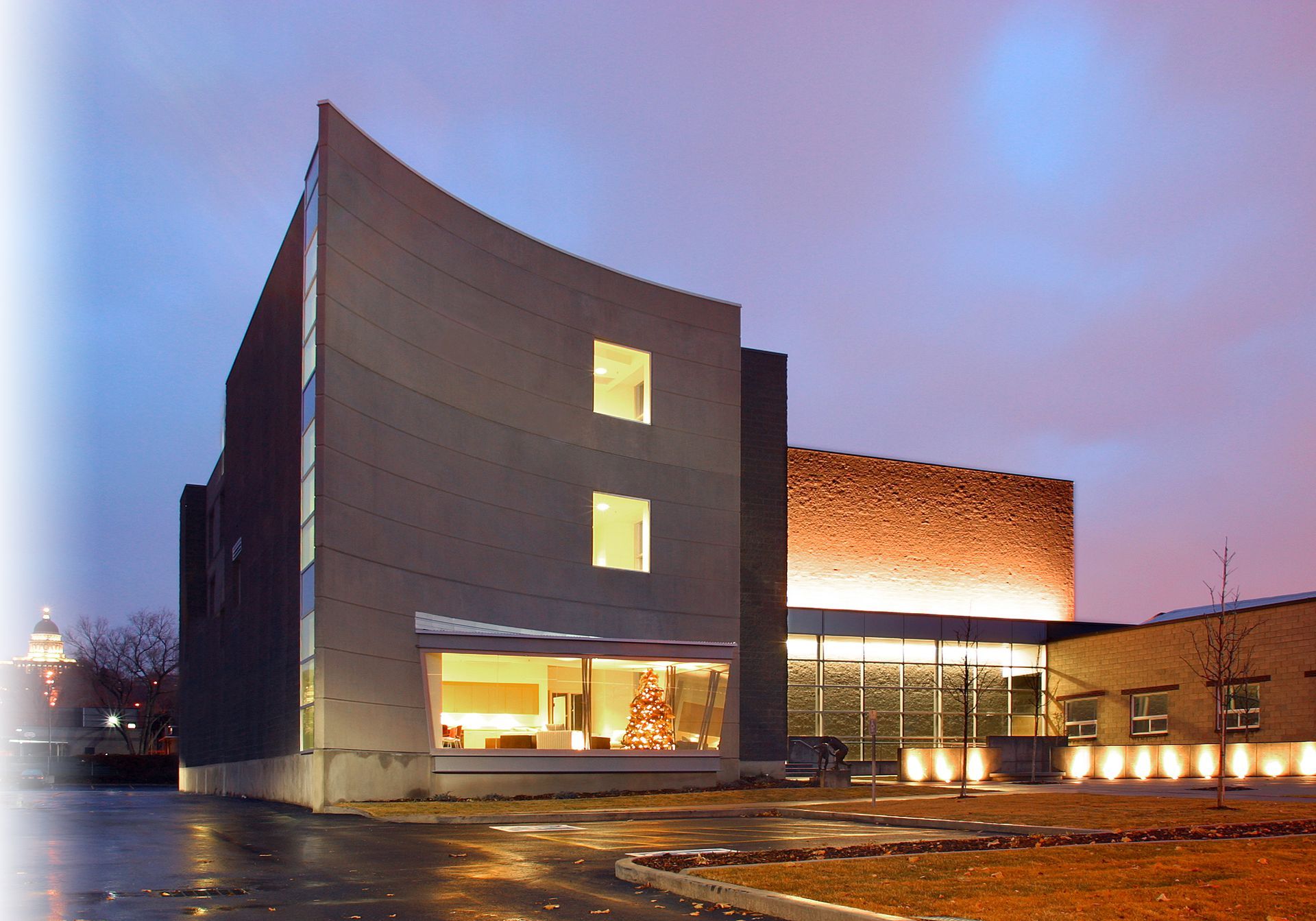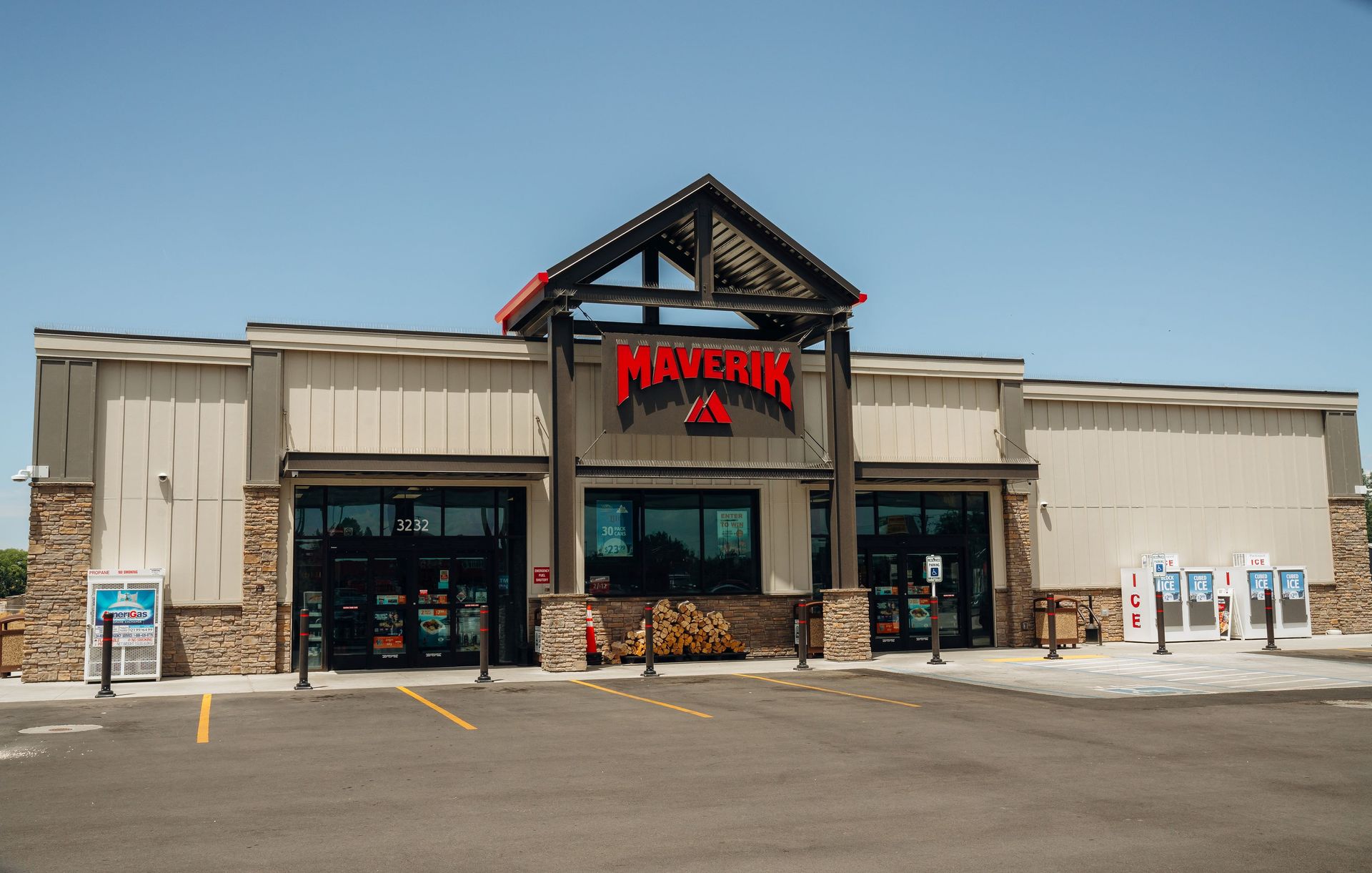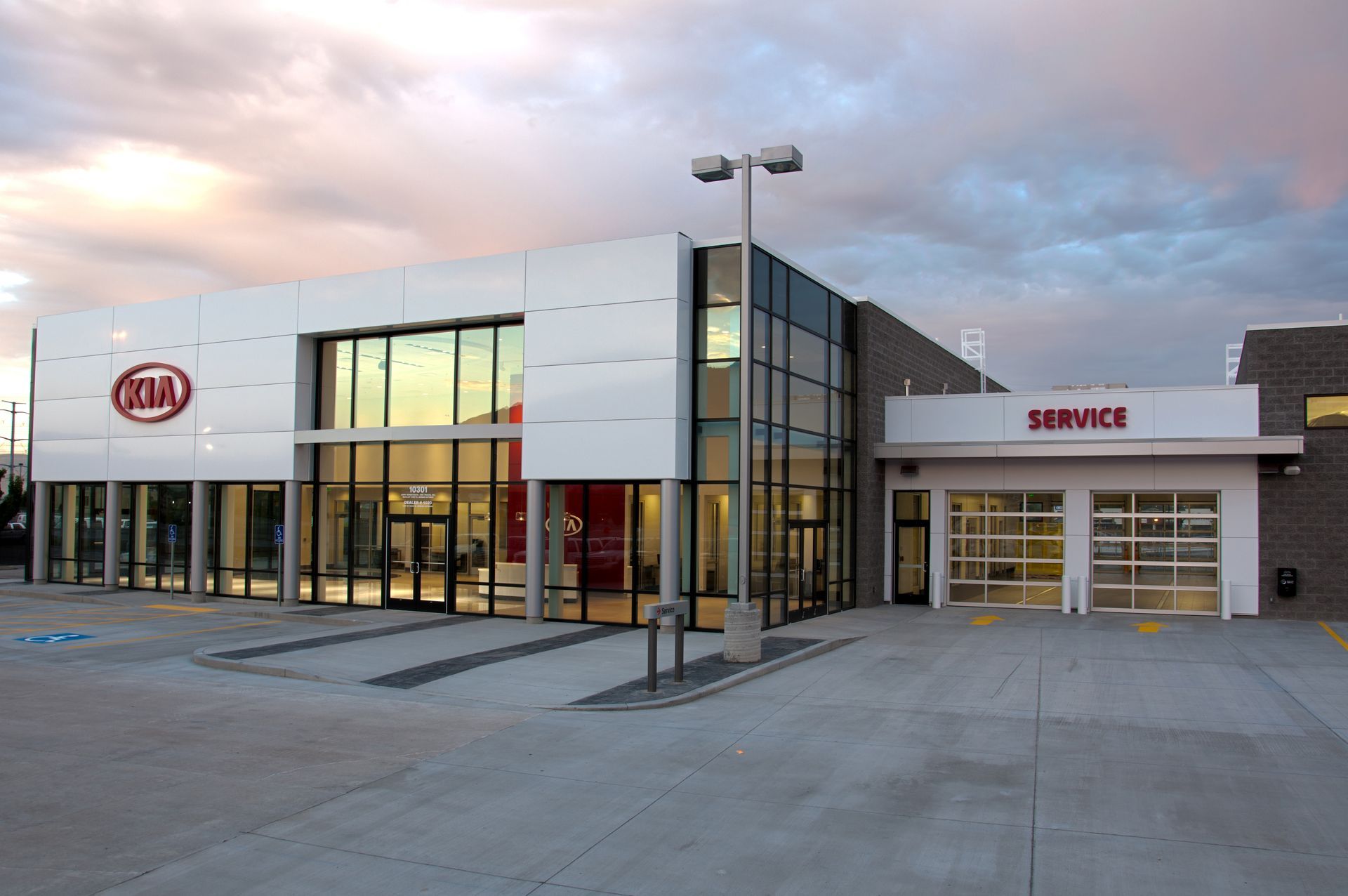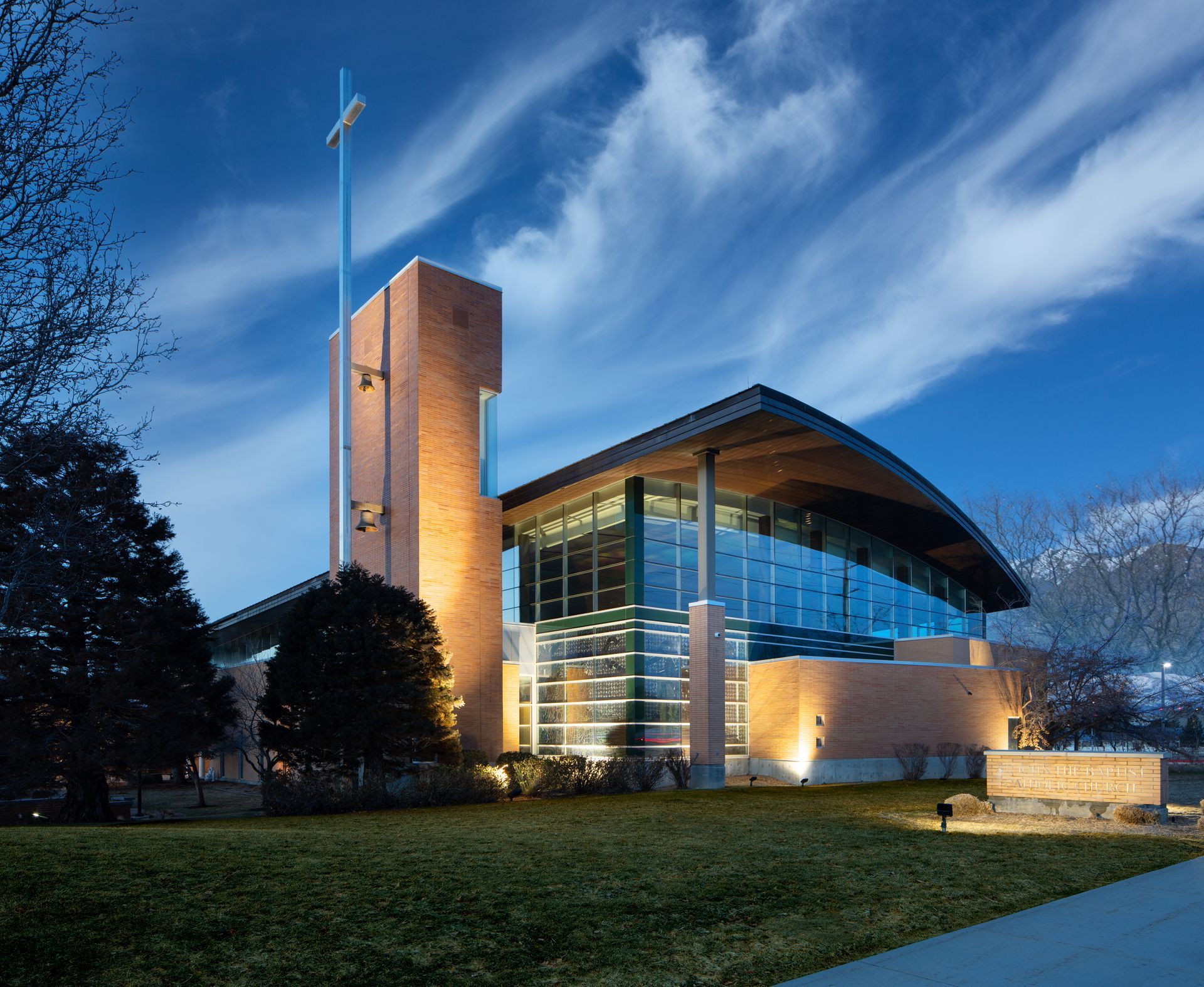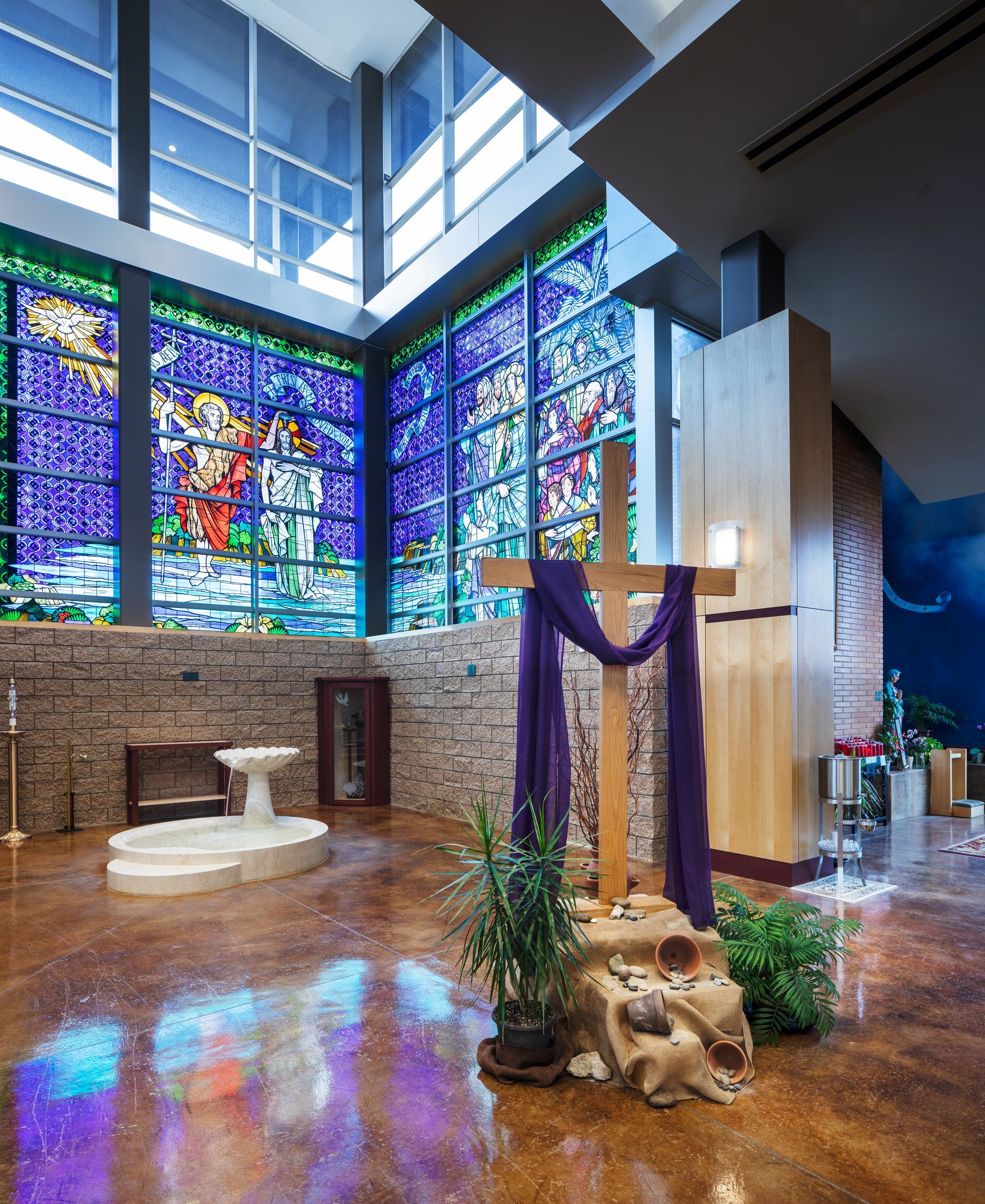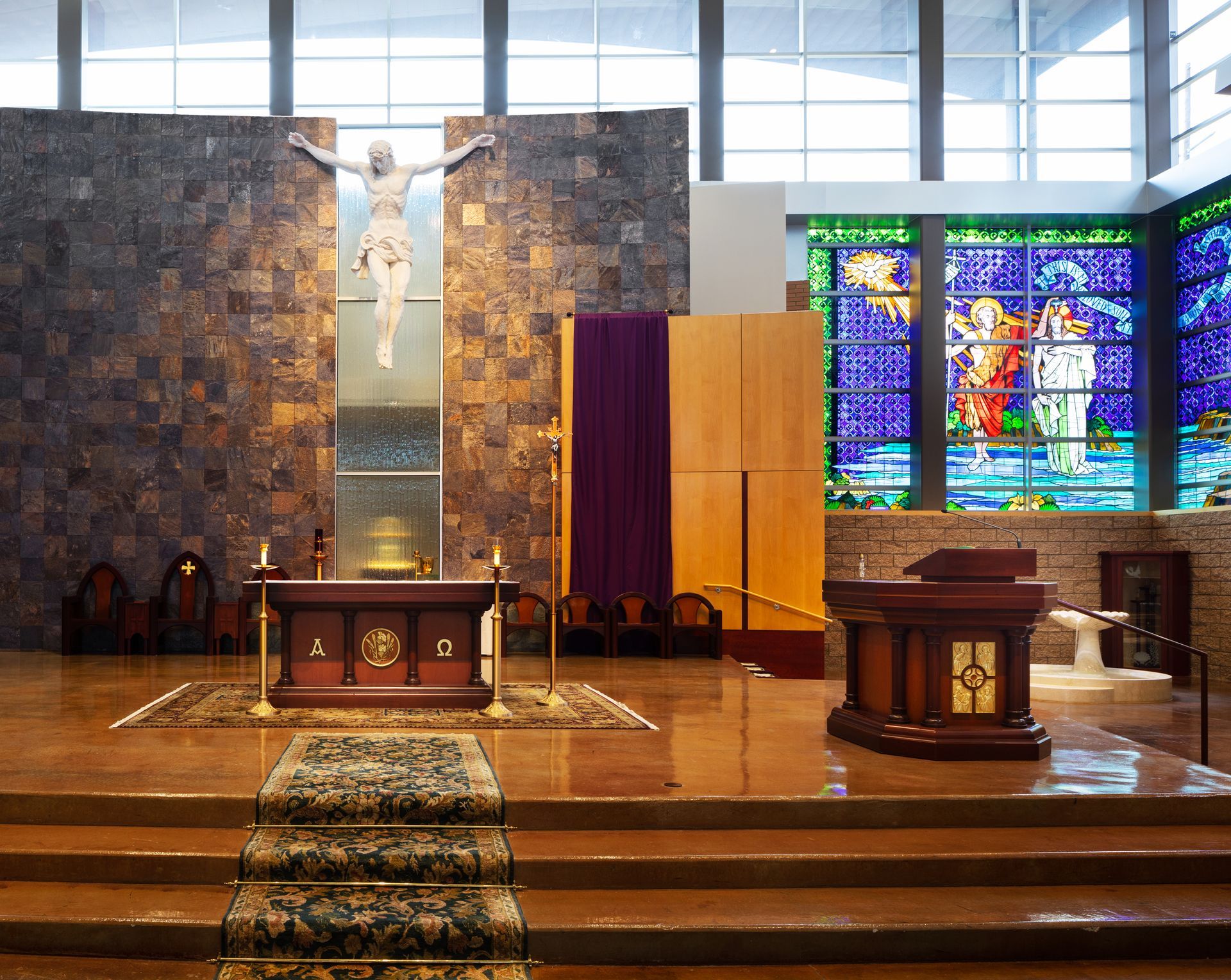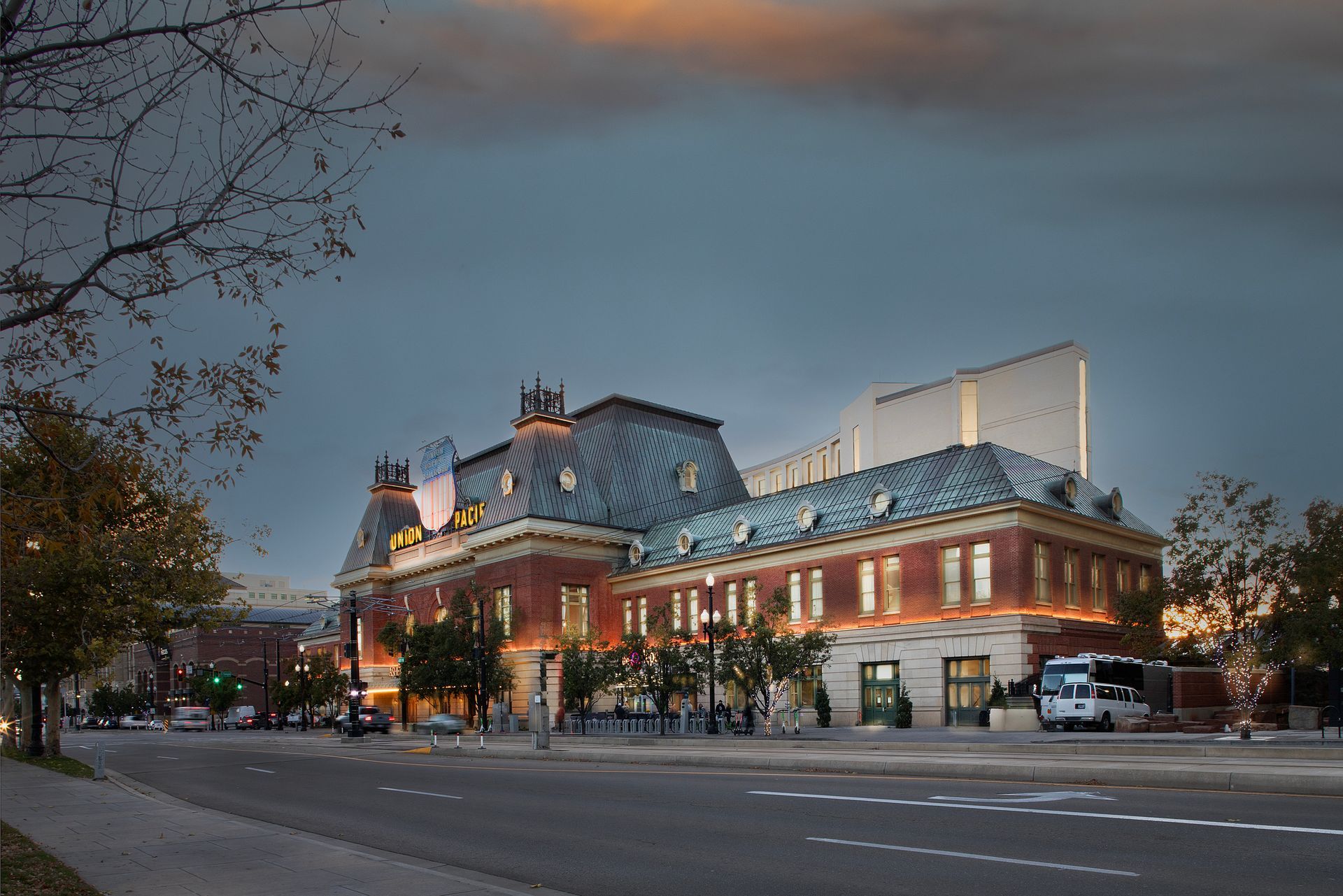Founder John, his wife Linda, and son Kevin reflect on Cameron Construction’s 50-year history of construction excellence, and John’s role as a co-founder of ABC’s Utah chapter.
By Brad Fullmer

The Utah Opera Production Building (left) was a complex renovation/addition project that included a rehearsal hall, practice rooms, offices, lounge and conference areas, and a 9,000 SF dance studio. The firm continues to thrive in the retail sector (big-box retailers, car dealerships, convenience stores), with current work in multiple states.
Vast Experience in Various Markets; Transition to Second Generation
Cameron brought aboard Mike Cervino in 1973, and he was a valuable contributor to the firm's overall success for 29 years, serving as Cameron's partner. The company pursued work in a variety of markets and quickly gained a reputation for delivering high-quality work on projects that consistently hit budget and schedule targets. One of Cameron Construction's hallmarks has been its ability to work across diverse building markets. Retail has long been a strong market for the firm and that remains true today, with various retail projects currently underway in more than a dozen states.
Other key markets include institutional, religious, industrial, healthcare, recreation and hospitality. Cervino's connection to the Catholic Diocese of Utah brought in a couple of notable projects, Kearns St. Ann's School Restoration in 1998 in Salt Lake City and St. John the Baptist Catholic Church in 2003 in Draper on the Juan Diego School campus.
"I feel a great deal of pride in the book of work that our company has created," said Cameron. "I learned early on to listen to our clients and assist them to achieve a better project than they had envisioned. I worked hard, but Cameron's success—then and today—is not just due to me or Kevin. It rests with our employees. We try and treat them right and are proud that we have created a workplace where our people thrive and spend their careers with Cameron."
Utah's mini-recession immediately after the 2002 Salt Lake Olympics hit the company hard, and Cameron pivoted by buying out Cervino, and bringing Linda back full-time to help pick up the slack. The company gritted through a couple of modest years and in 2007 Kevin took over the reigns as President, a role he's more than capably filled the past 16 years.
"It was a challenging time," Linda said. "It was a busy time for us, as John was phasing out and Kevin was taking over. There was a great deal of pride, number one that he wanted to take over, and also [some] worry [...] that it would turn out the way everyone would like it to. He had a great mentor in his dad."
Kevin considers himself a bit of a construction lifer, with a strong early memory of the jobsite of the firm's first commercial project in Castle Dale, where John was living part-time in a trailer. Kevin followed a similar path, cleaning up jobsites in his early teens much like John did for his uncles, and then moving up to framing/carpentry.
"I remember one superintendent telling another on a jobsite one day, 'you'd better treat him right because he's going to be your boss someday'," Kevin recalled. "That statement seemed rather preposterous to me at the time as I was probably in my mid-teens. I don't recall when I made the decision to make this my livelihood—I just always enjoyed the work and felt pride that I got to work for Cameron."
Kevin's leadership acumen was put to the test during the great recession (2008-2011) shortly after he became President, but the firm weathered the storm and completed one of its signature projects—the Temple Har Shalom in Park City—during that period.
"Since that transition the company has had its ups and downs as you would expect, but overall, it's been a good experience," Kevin said. "During the recession we managed to keep our superintendent core intact. It was a source of great pride, frankly, that we were able to get by without having to shed people."
He continued, "The past decade has seen the company grow and prosper in a manner that has belied its prior experience. We've got more personnel than we ever have and like most, we're feeling limited by the availability of manpower."
Cameron's staff includes 32 full-time employees, including 18 superintendents and three project managers. Kevin also manages projects as he sees fit, believing it's an important component to staying sharp.
"I still like it—it's why I got [into construction] in the first place," he said. "I like to bring things together and make a project fly. It's hard to be farther removed."
"Kevin is very insightful and he's quick in analyzing situations," Linda said. "He can see what's going on without [worrying about] all the extraneous things."
"I'm happy Kevin lets the "Old Man" keep a hand in the business," Cameron chuckled. "Cameron continues to be a big part of my life, but I try not to give too much advice. I am appreciative of the relationships that have been formed in the past 50 years."
St. John the Baptist Catholic Church in Draper is an exquisite 31,000 SF project that illustrates Cameron’s attention to detail and expertise in religious projects. The project includes a stunningly beautiful sanctuary, fellowship area, offices, an organ loft, a kitchen, and recreation center. (photos by Sohm Photogrfx)
Legacy Includes Military, Community Impact
Beyond the legacy of Cameron Construction and being a co-founder of ABC Utah, John was prominently engaged in a host of military and community endeavors throughout his life. His list of achievements is staggering:
—Combined 27 years of service in the Utah National Guard (Enlisted and Officer service); served as Inspector General Utah ARNG, retired as a Colonel.
—Served in the Boy Scouts of America for 20-plus years, earning the Silver Beaver Award, a District Award of Merit and a Distinguished Commissioner Award.
—Spent 28 years as Chairman of the Construction Trades Advisory Council for Salt Lake Community College.
—Vice Chair for the construction of the Men's and Family Homeless Shelter; Chair for construction of the Women's Shelter.
—Member and Officer in Sugar House Kiwanis Club for 30 years.
"Linda and I have been fortunate in many ways, so it was just natural to say "yes" when I was asked to lend a hand," said Cameron. "And like most who volunteer, I found that I learned and grew and benefitted from each of my activities."
